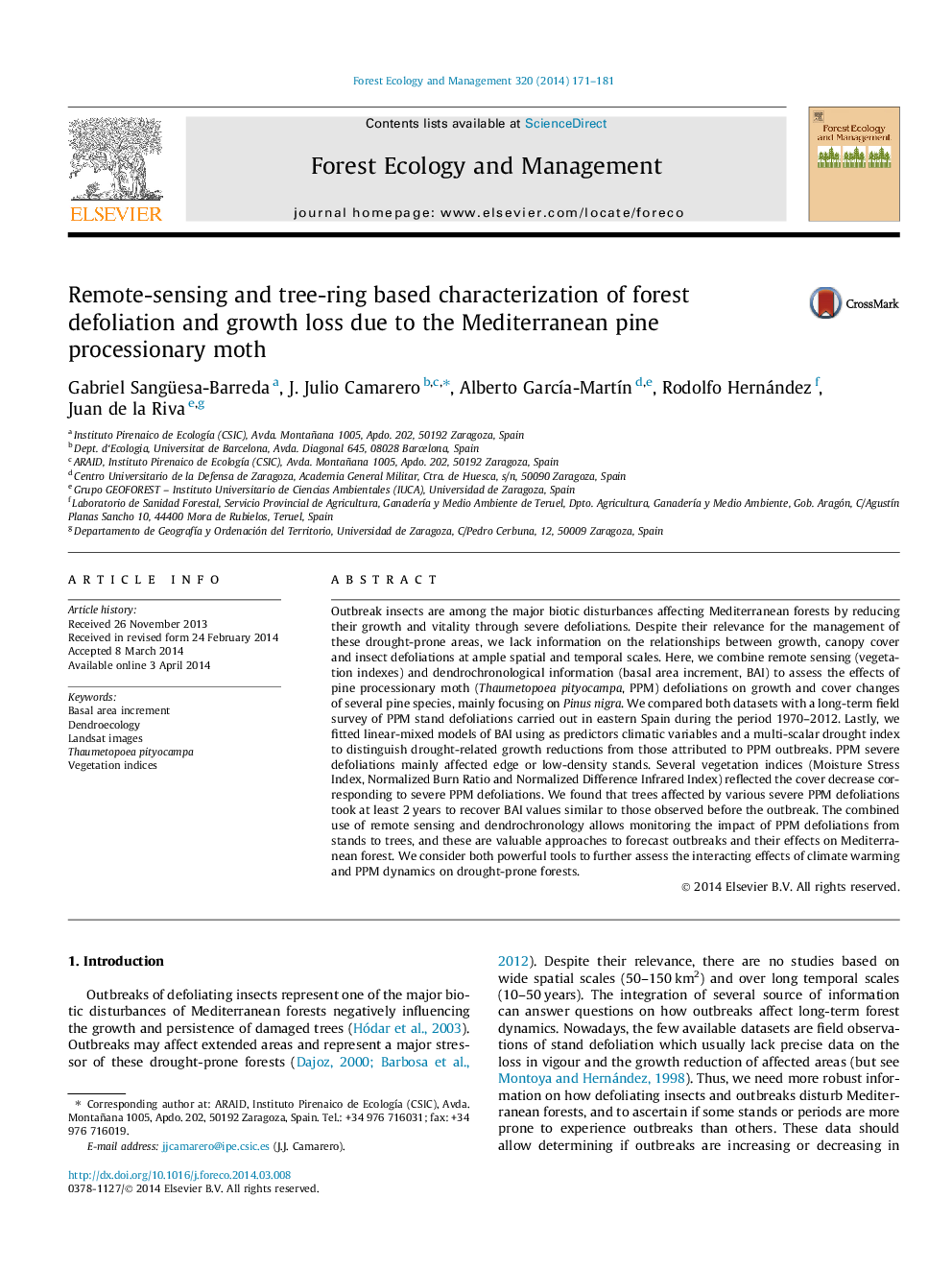| کد مقاله | کد نشریه | سال انتشار | مقاله انگلیسی | نسخه تمام متن |
|---|---|---|---|---|
| 86568 | 159198 | 2014 | 11 صفحه PDF | دانلود رایگان |
• How defoliating insects affect Mediterranean pine forests in the long term?
• We used a 43-year long field survey of pine processionary moth (PPM) defoliation.
• We assessed growth and cover by using tree-ring and Landsat remote-sensing data.
• Several vegetation indices reflected the PPM defoliations.
• Dendroecology and remote sensing allow detecting PPM outbreaks in pine forests.
Outbreak insects are among the major biotic disturbances affecting Mediterranean forests by reducing their growth and vitality through severe defoliations. Despite their relevance for the management of these drought-prone areas, we lack information on the relationships between growth, canopy cover and insect defoliations at ample spatial and temporal scales. Here, we combine remote sensing (vegetation indexes) and dendrochronological information (basal area increment, BAI) to assess the effects of pine processionary moth (Thaumetopoea pityocampa, PPM) defoliations on growth and cover changes of several pine species, mainly focusing on Pinus nigra. We compared both datasets with a long-term field survey of PPM stand defoliations carried out in eastern Spain during the period 1970–2012. Lastly, we fitted linear-mixed models of BAI using as predictors climatic variables and a multi-scalar drought index to distinguish drought-related growth reductions from those attributed to PPM outbreaks. PPM severe defoliations mainly affected edge or low-density stands. Several vegetation indices (Moisture Stress Index, Normalized Burn Ratio and Normalized Difference Infrared Index) reflected the cover decrease corresponding to severe PPM defoliations. We found that trees affected by various severe PPM defoliations took at least 2 years to recover BAI values similar to those observed before the outbreak. The combined use of remote sensing and dendrochronology allows monitoring the impact of PPM defoliations from stands to trees, and these are valuable approaches to forecast outbreaks and their effects on Mediterranean forest. We consider both powerful tools to further assess the interacting effects of climate warming and PPM dynamics on drought-prone forests.
Journal: Forest Ecology and Management - Volume 320, 15 May 2014, Pages 171–181
